1. Little Rock, Arkansas

Little Rock, Arkansas, has long been known for its high obesity rates, with over 36% of the adult population classified as obese. The city’s struggle with poverty and limited access to fresh produce contributes significantly to the issue, according to Alex Kienlen from KARK. Many residents of Little Rock turn to cheap, processed foods, which are high in fat and sugar, as more affordable options. These food choices are exacerbated by a lack of education on nutrition and healthy eating.
The city’s infrastructure also poses challenges for residents who want to stay active. Little Rock has limited pedestrian-friendly areas and public parks, making it hard for people to find opportunities for exercise. With fewer options for physical activity and poor dietary habits, Little Rock’s residents face significant hurdles in the battle against obesity. Without major changes to both lifestyle and the environment, this problem is likely to persist.
2. Shreveport, Louisiana

Shreveport, Louisiana, is another city where obesity is a major public health issue, with about 38% of the population being classified as obese. Shreveport’s residents face a combination of limited access to nutritious food and cultural eating habits that favor fried and heavy meals, Presley Bo Tyler from Shreveport Times reports. Fast food and convenience foods dominate the local diet, making it difficult for people to maintain a healthy weight. These habits are entrenched in the local culture and are passed down through generations.
In addition to diet, Shreveport also struggles with a lack of physical activity. The city’s infrastructure doesn’t prioritize walking or cycling, and gyms and recreational facilities are often not easily accessible for low-income residents. With limited options for both healthy food and exercise, Shreveport is caught in a cycle of unhealthy living. These challenges make it tough for the city to break free from its obesity epidemic.
3. Jackson, Mississippi
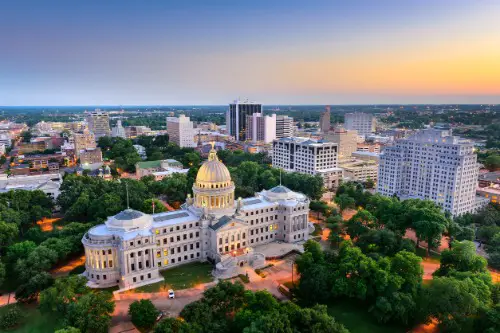
Jackson, Mississippi, regularly finds itself at the top of lists for obesity rates, with over 40% of the city’s residents considered obese. The South, in general, has higher obesity rates than other regions, and Jackson is no exception, according to Garret Grove from WJTV. Residents in Jackson often rely on fast food and fried comfort foods, which are staples of Southern cuisine, contributing to weight gain. These dietary habits are compounded by the city’s high poverty rate, making access to healthier options even more challenging.
The city’s infrastructure also plays a role in exacerbating obesity. Jackson is not particularly known for its pedestrian-friendly streets or abundant green spaces for outdoor activities. With limited recreational options, residents often find it difficult to prioritize physical activity, especially in the face of daily life struggles. The combination of poor diet and low activity levels makes Jackson a hot spot for obesity in the U.S.
4. Montgomery, Alabama

Montgomery, Alabama, is another city where obesity rates are alarmingly high, with over 35% of adults classified as obese. The city faces high rates of poverty, and many residents struggle to afford healthy food options, relying instead on cheap, calorie-dense meals. Fast food chains are prevalent in Montgomery, often serving as the go-to option for those with busy lifestyles. This reliance on unhealthy food is compounded by a lack of nutrition education and limited access to gyms or exercise programs, according to Alexander Willis from Alabama Daily News.
Cultural habits also play a role in Montgomery’s obesity epidemic. Southern comfort foods are a major part of the city’s culinary identity, and many residents grow up eating high-fat, high-sugar meals. While the city has made strides in encouraging healthier lifestyles, it still faces significant obstacles, including a lack of green spaces and safe areas for physical activity. These combined factors continue to fuel obesity rates in Montgomery.
5. Baton Rouge, Louisiana

Baton Rouge, Louisiana, is another city facing significant obesity issues, with roughly 40% of its population classified as obese. The state of Louisiana struggles with high rates of poverty and limited access to fresh, nutritious foods, which contributes to poor eating habits. In Baton Rouge, many residents turn to processed and fast foods, which are often more affordable and easier to obtain than healthier options. These eating habits are compounded by a lack of education about nutrition and fitness.
Additionally, Baton Rouge has a relatively high rate of sedentary lifestyles. Residents often spend their free time engaging in low-energy activities, and the city’s infrastructure doesn’t always encourage walking or biking. With limited public health initiatives and a deep-rooted culture of food indulgence, Baton Rouge’s obesity problem is difficult to tackle. The combination of poor diet, lack of exercise, and socio-economic factors fuels this ongoing health crisis.
6. McAllen, Texas

McAllen, located in the southern tip of Texas, consistently ranks as one of the most obese cities in the U.S., according to Giulia Carbonaro from Newsweek. With nearly 40% of its population classified as obese, it’s clear that health issues are widespread. The city faces limited access to affordable healthy food, and many residents rely on high-fat, high-sugar diets due to the area’s economic conditions. Fast food chains are often more accessible and affordable than healthier alternatives, exacerbating the issue.
The cultural factors in McAllen also play a role in the obesity crisis. The area has a large Hispanic population, and traditional Mexican cuisine—while delicious—is often calorie-dense. Combined with sedentary lifestyles and a lack of consistent access to exercise facilities, McAllen’s residents face an uphill battle when it comes to combating obesity. These factors create a perfect storm for high obesity rates in this region.
7. Oklahoma City, Oklahoma

Oklahoma City is another city grappling with obesity, with about 36% of the population being obese. The combination of an affordable but unhealthy diet and a lack of exercise opportunities is at the heart of the city’s obesity epidemic. Many residents rely on fast food and processed foods, which are often more accessible and cheaper than fresh fruits and vegetables. Furthermore, Oklahoma City’s hot summers discourage outdoor activity, and public spaces for recreation are limited.
Oklahoma City also faces a high poverty rate, which makes it difficult for residents to prioritize healthy eating. The affordability of unhealthy foods, coupled with the lack of affordable exercise options, contributes to the city’s obesity crisis. While some programs are in place to address these issues, they’re often not enough to overcome the city’s widespread reliance on unhealthy habits. As the city continues to grow, tackling these issues will be key to reversing the obesity trend.
8. Louisville, Kentucky

Louisville, Kentucky, has an obesity rate of around 35%, making it one of the most obese cities in the U.S. Known for its rich, calorie-dense foods like fried chicken and bourbon-soaked delicacies, the city has a long history of indulgent eating habits. Residents often gravitate toward these comfort foods, which are widely available and culturally significant, even though they can lead to significant weight gain. Fast food is a common staple for busy families, and healthier options are often more expensive or less convenient.
Additionally, Louisville struggles with a lack of accessible green spaces and gyms for exercise, particularly in lower-income areas. Without regular physical activity, weight management becomes difficult, especially when combined with unhealthy eating habits. Many people in Louisville also have limited access to nutrition education, making it harder to adopt healthier lifestyles. Without changes in both diet and exercise habits, Louisville’s obesity epidemic will likely continue.
9. Tulsa, Oklahoma

Tulsa, Oklahoma, ranks as one of the most obese cities in the U.S., with about 35% of its population facing obesity-related health issues. Like other cities in Oklahoma, Tulsa’s residents often have limited access to healthy food options, which forces them to rely on processed foods. The prevalence of fast food chains and convenience stores makes unhealthy eating the easier choice for many. Additionally, local grocery stores often stock fewer fresh fruits and vegetables, making it hard to maintain a balanced diet.
The city also faces challenges with physical activity. Tulsa’s streets are not particularly walkable, and there’s a limited availability of public parks or bike paths. For many residents, the lack of exercise opportunities makes it difficult to stay active and healthy. These environmental and dietary factors are major contributors to the city’s high obesity rate.
10. Houston, Texas

Houston, Texas, struggles with high obesity rates, with nearly 35% of its population classified as obese. Houston’s diverse population means that there is a wide variety of food options, but unfortunately, many of them tend to be calorie-heavy. Fast food is easily accessible, and the city’s sprawling size means that many people rely on cars instead of walking, leading to more sedentary lifestyles. In addition, cultural factors around food often emphasize larger portions, further contributing to weight gain.
Furthermore, the city’s hot climate and lack of pedestrian-friendly infrastructure discourage outdoor exercise. With fewer opportunities for physical activity, people may not make the time or effort to stay fit. Combined with a culture that often celebrates indulgence, Houston faces a tough challenge in combating its obesity crisis. Efforts to improve access to healthy food and promote physical activity are needed to address this growing problem.
11. Memphis, Tennessee
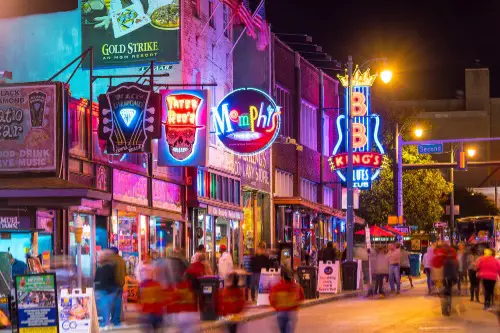
Memphis, Tennessee, consistently ranks as one of the most obese cities in the U.S., with an obesity rate of around 35%. The city’s Southern food culture, which includes fried foods, barbecue, and heavy sides, contributes significantly to weight gain. With a lack of access to affordable, fresh produce, many Memphians rely on processed and fast food for convenience. These dietary habits are exacerbated by a high poverty rate, which makes healthier food options less accessible.
Memphis also faces challenges when it comes to exercise. The city’s infrastructure is not particularly conducive to walking or cycling, and many neighborhoods lack safe spaces for physical activity. Without regular exercise and the combination of an unhealthy diet, Memphis’s obesity problem persists. The city needs more initiatives to promote healthy eating and physical activity, especially in lower-income areas.
12. Cleveland, Ohio
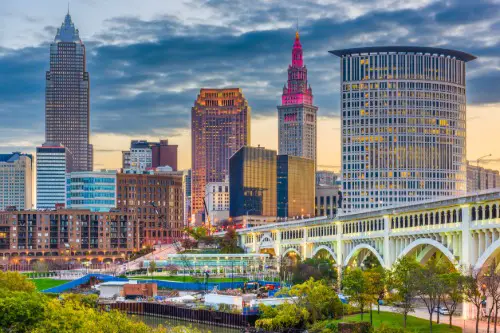
Cleveland, Ohio, is another city grappling with high obesity rates, with nearly 35% of its population considered obese. Many factors contribute to this issue, including the city’s economic struggles, which often leave residents with fewer choices when it comes to healthy eating. Fast food chains are more affordable and easily accessible than fresh food markets, making it difficult for many people to maintain a healthy diet.
Cleveland also has a significant number of neighborhoods with limited access to fitness facilities or safe areas for physical activity. In a city where public health resources are stretched thin, residents may find it hard to prioritize exercise. These environmental and socio-economic factors create a cycle of unhealthy living in Cleveland. Until changes are made to improve both access to healthy foods and exercise opportunities, the obesity epidemic will continue.
13. Indianapolis, Indiana
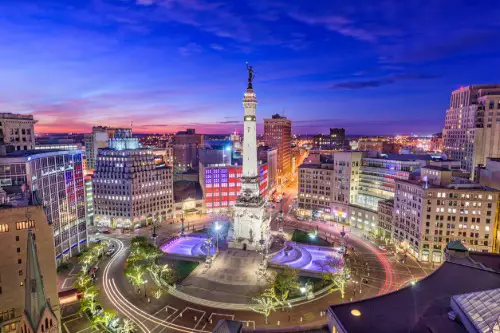
Indianapolis, Indiana, ranks as one of the most obese cities in the U.S., with obesity rates hovering around 34%. The city struggles with widespread poverty, and many residents turn to cheap, unhealthy foods that are calorie-dense and low in nutritional value. Fast food chains and convenience stores are the go-to options for busy families, and access to fresh, healthy produce is limited in many neighborhoods.
In addition, Indianapolis lacks sufficient public spaces for physical activity, and the city’s car-centric infrastructure doesn’t encourage walking or biking. Many residents face obstacles when it comes to getting regular exercise, especially in lower-income areas where gyms or fitness programs are unaffordable. With limited options for both healthy food and physical activity, Indianapolis faces a persistent obesity crisis. Addressing these systemic issues will be key to reducing obesity in the city.
14. St. Louis, Missouri

St. Louis, Missouri, faces a significant obesity epidemic, with over 33% of its population classified as obese. Many factors contribute to this, including high poverty rates and limited access to affordable, healthy foods. Processed and fast foods are often the easiest and cheapest options for residents, especially those in underserved communities. Combined with a lack of physical activity, these habits have led to a public health crisis in the city.
St. Louis also struggles with a lack of infrastructure that promotes walking or cycling. Many areas are car-dependent, and public transportation options are limited, making it difficult for residents to engage in regular physical activity. With the prevalence of unhealthy eating habits and limited exercise opportunities, obesity remains a serious issue in St. Louis. Until significant changes are made in both diet and lifestyle, this problem will persist.
15. Phoenix, Arizona
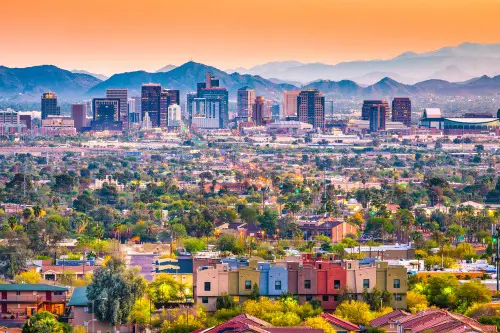
Phoenix, Arizona, rounds out our list with a significant obesity problem, with about 33% of its population affected. The city’s sprawling layout and hot desert climate create a unique set of challenges when it comes to physical activity. The high temperatures make outdoor exercise uncomfortable for much of the year, and many areas lack pedestrian-friendly infrastructure. This leaves residents with limited options for staying active outside of gyms, which may not be accessible to everyone.
In addition to this, Phoenix also struggles with food deserts in some areas, where access to fresh fruits and vegetables is limited. Many residents in these neighborhoods turn to convenience foods, which are often high in fat, sugar, and salt. The combination of these environmental and lifestyle factors makes Phoenix one of the most obese cities in the U.S. Addressing these challenges will require both improving access to healthier foods and creating more opportunities for physical activity.


